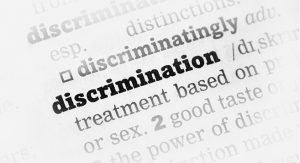It’s common sense not to discriminate against your employees, but how can you be sure that your company is prepared to protect itself in the event that a worker does lay a charge against you?
After all, more than 91,000 discrimination claims were brought to the attention of the U.S. Equal Employment Opportunity Commission (EEOC) in 2016 alone. So if you don’t want to become a statistic or, worse, spend hundreds of thousands of dollars and an equally staggering number of hours defending yourself in a lawsuit, then you need to be taking appropriate steps to make sure your hiring process and the rest of your business is EEO compliant.
The good news is that if scrolling through government websites is not your thing (it can be confusing and might allow for some elements of compliance to fall through the cracks), as well as some simple actions that can help you make sure your policies are in line with the EEOC guidelines.
A Refresher: What is the EEOC?
The EEOC is a federal agency charged with enforcing a collection of federal laws that make it illegal to discriminate against a job applicant or an employee. Employees are offered protection in a variety of areas under these statutes, including protection from discrimination on the basis of race, color, religion, sex (which includes pregnancy, gender identity, and sexual orientation), national origin, age, disability or genetic information. The laws also make it illegal to discriminate against a person because they have filed a complaint or lawsuit or sought legal representation regarding workplace discrimination.
Private companies that employ at least 15 employees must follow the laws regarding all of the above listed elements except for age, while companies with 20 or more employees are also required to follow the laws regarding age discrimination under the Age Discrimination in Employment Act. This applies to all work situations, such as hiring, firing, promotions, harassment, training, wages, and benefits. Also, if your company has a federal contract or subcontract worth more than $10,000, you must comply with EEO requirements or your contract could be canceled.
To be an EEO compliant company you must be able to prove that none of the above factors were considered in the process of hiring, promoting, or laying off workers, or during any disciplinary proceedings. Furthermore, you’re required to keep certain records, and in the cases that you’re a business of a certain size, file certain reports (more on these points later).
3 Simple Steps to EEO Compliance
- Provide All the Training… and Zero Tolerance
Make your office a discrimination-free zone by having a stellar plan for employee training and a zero-tolerance policy for harassment. After all, if a discrimination claim is lodged against your company, it won’t be the employee who pays the price.
Train your employees about what is and what is not acceptable in the workplace and let them know that there are consequences for ignoring the law. Zero tolerance means disciplining any employee who has harassed others. Disciplining employees who don’t follow the law is the best way to prevent violations, according to the U.S. Equal Employment Opportunity Commission, which provides training that teaches ways to prevent employment discrimination.
Want to take it a step further? Government offices like the Department of Justice (DOJ) are creating curricula to help employees identify their own biases and prevent stereotyping. According to a press release announcing the training last year, the DOJ vowed to train employees to recognize their own implicit bias, which “can affect interactions and decisions due to race, ethnicity, gender, sexual orientation, religion and socio-economic status, as well as other factors. Social science has shown that all individuals experience some form of implicit bias, but that the effects of those biases can be countered through training.”
- Keep Good Records
Accurate applicant and personnel records are critical to compliance with EEO guidelines. You must keep employee records for one year after an employee is terminated to be in compliance. To be compliant with the Age Discrimination in Employment Act (ADEA), you must keep records for three years.
The EEOC recommends keeping records related to employee pay for two years. This includes information on wages paid, job evaluations and merit systems, so be sure to keep all your payroll records, employee benefit plan information and any bonus records. Also, if you employ more than 100 people, you must file a series of Employer Information Reports, like an EEO-1 Report.
On the hiring side, capturing EEO data from your job applicants and your subsequent hires is easy with products like which stores all applicant data. Then, in the situation that you are audited, you will have easy access to this data and can quickly and efficiently provide it in an effort to prove your compliance.
- Don’t Just Say It, Display It
The “EEO is the Law” poster summarizes these laws and explains how an employee or applicant can file a complaint if they believe that they have been the victim of discrimination. As a best practice, display these posters in your workplace. The poster is available in English, Arabic, Chinese and Spanish on the EEOC’s website for downloading.
Compliance can be confusing. Make it simpler with MightyRecruiter and start your free trial today!
Legal Disclaimer: The content on our website is only meant to provide general information and is not legal advice. We make our best efforts to make sure the information is accurate, but we cannot guarantee it. Do not rely on the content as legal advice. For assistance with legal problems or for a legal inquiry please contact your attorney.
 MightyRecruiter
MightyRecruiter




Leave a Reply